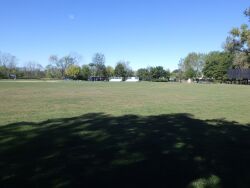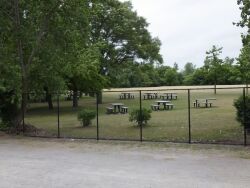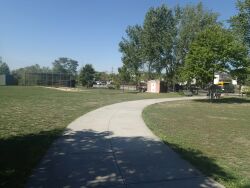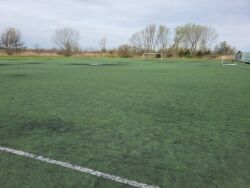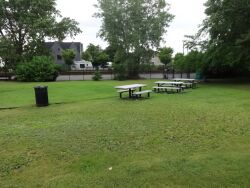Idlewild Park
The Atlantic Flyway - Idlewild Park
The bald eagle, a national symbol of strength and freedom, was formerly listed as an endangered species. Although this majestic bird no longer nests here, it can still be seen soaring through the skies of New York City, thanks to the city’s position along the Atlantic flyway. Every year, many birds migrate to avoid overpopulation in their breeding grounds and to find more abundant food supplies. Along the way, the city’s parks provide an ideal area for the migrating birds to rest and refuel.
Stretching along North America’s eastern coast from Florida to Nova Scotia, the Atlantic flyway is one of the four main American flyways, along with the Mississippi (which follows the Mississippi River), Central, and Pacific (ranging from California to Alaska). Millions of songbirds, seabirds, birds of prey, and waterfowl follow the Atlantic flyway every fall and spring. The Atlantic flyway is not limited to birds alone; the route is also used by butterflies, as well as some species of bats and dragonflies.
Migrating birds use a variety of methods to navigate the flyway. Topographical cues, such as coastlines, river courses, and mountain ranges, help to guide the journey. Astronomical and physical signposts, such as the stars, the sun, and the earth’s magnetic field, also aid in the steering of migrating flocks towards their destinations. Since many songbirds prefer to migrate by the stars, large flocks routinely show up on nighttime radar scans at JFK airport. During the day, they descend upon the green areas of the city, providing spectacular opportunities for birdwatching.
Over 270 species of migrating birds have been spotted in Central Park alone; on a single day in the spring it is possible to see over 100 species. In the fall, the Hawkwatch in Central Park has tallied over 8,000 migrating hawks, and on a single day, 48 bald eagles appeared at Belvedere Castle. On a single day in the Bronx, 1,000 broad-winged hawks were once spotted crossing the Hudson River into New Jersey. At the Jamaica Bay Wildlife Refuge, large flocks of tree swallows, sometime over 10,000 per flock, stop on their way to the Carolinas in the fall.
Warblers, flycatchers, swallows, orioles, sparrows and thrushes, as well as ruddy ducks, black ducks, snow geese, tundra swans, Canada geese, and Atlantic brants are all common visitors. Birds of prey, such as peregrines, golden eagles, northern harriers, osprey, sharp-shinned hawks, Cooper’s hawks, red-tailed hawks, and northern goshawks are also frequently seen.
Migrating birds often go unnoticed. Hawks fly out of sight, high above the streets and skyscrapers, while songbirds migrate at night and roost in trees during the day. But to the careful observer, New York City is one of the best places to observe migrating birds along the Atlantic flyway, boasting a high diversity and abundance of species to enjoy.
Check out your park's Vital Signs
Clean & Safe
Green & Resilient
Empowered & Engaged Users
Share your feedback or learn more about how this park is part of a
Vital Park System



